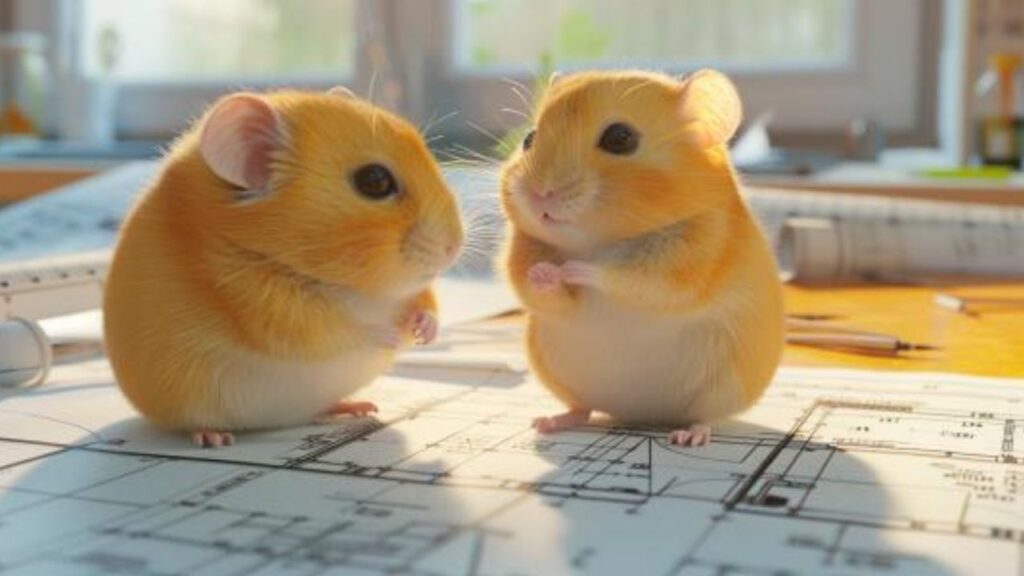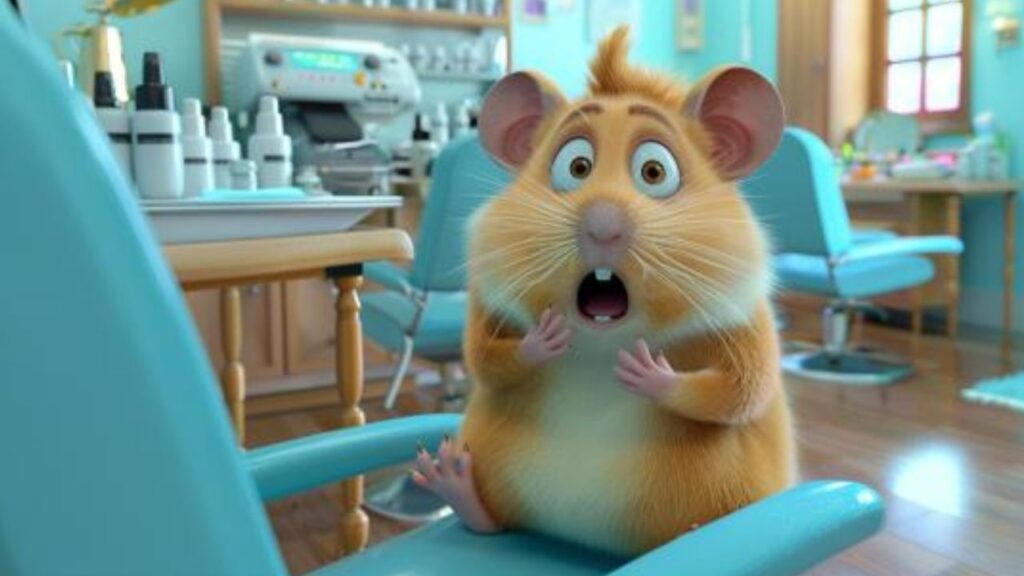Embarking on a journey of training your hamster is not just about teaching them to navigate mazes or run on cue; it’s about tapping into their natural behaviors and instincts. This approach not only enriches their lives but also strengthens the bond between you and your tiny companion. By understanding the innate tendencies of these adorable creatures, you can transform routine training into a series of engaging and enriching activities that cater to their natural instincts.
The Power of Instinct
At the heart of every hamster is a set of behaviors driven by instinct. These are not mere habits, but survival mechanisms that have evolved over thousands of years. Recognizing and appreciating these instincts is the first step toward effective training. For instance, a hamster’s urge to explore and hoard provides a foundation upon which you can build a variety of training exercises that are both fun and mentally stimulating for your pet.
Turning Instincts into Opportunities
Understanding your hamster’s natural behaviors offers a unique opportunity to tailor your training methods specifically to them. This section will delve into how the instinctual activities of hamsters, such as their exploratory nature and their nocturnal patterns, can be used to your advantage in training. By aligning your training sessions with these natural behaviors, you create a more comfortable and effective learning environment for your hamster.
Understanding Hamster Behaviors

Delving into the world of hamsters opens up a treasure trove of behaviors that, with a bit of insight and creativity, can be harnessed for both training and enrichment. From their insatiable curiosity to their innate hoarding instincts, each aspect of hamster behavior offers a unique opportunity to engage and connect with these fascinating creatures. Let’s explore how these natural inclinations can be turned into advantageous training sessions.
Exploration and Curiosity
Hamsters are born explorers. Their natural inclination to investigate their environment is not just a quest for food but a complex interaction with their surroundings. This curiosity, when leveraged correctly, can become a powerful tool in training. Introducing new objects, textures, and puzzles into their habitat can stimulate their exploratory nature, encouraging them to interact with these elements in exchange for rewards. For example, hiding treats within toys or creating obstacle courses can turn a simple training session into an adventure, making learning not just effective but also incredibly enjoyable for your hamster.
Hoarding Habits
The sight of a hamster stuffing their cheeks can be both amusing and endearing, but this behavior goes beyond mere cuteness. Hoarding is a survival instinct, ensuring they have enough resources when food is scarce. In a home environment, this instinct can be redirected into positive training opportunities. Training sessions that incorporate hoarding can include activities where hamsters are encouraged to gather and store food items from various parts of their cage into their nest or a designated area. This not only taps into their natural hoarding behavior but also encourages problem-solving and physical activity, contributing to their overall well-being.
Nocturnal Activities
Hamsters are nocturnal, meaning they are most active during the night. Understanding and respecting this natural rhythm is crucial for effective training. Scheduling training sessions in the evening or early night can lead to better engagement and energy levels from your hamster. This alignment with their active hours allows for a more natural learning pace, reducing stress and increasing the likelihood of successful training outcomes. Additionally, night-time training sessions can utilize the quiet and calm of the evening, further enhancing the focus and attention of both trainer and hamster.
By embracing and integrating these natural behaviors into training regimens, we not only adhere to the biological and psychological needs of our hamsters but also enrich their lives in meaningful ways. Turning these instincts into fun and engaging activities can elevate the training experience, ensuring that each session is as rewarding for the hamster as it is for the trainer. With a little patience and understanding, we can transform these natural behaviors into the cornerstone of our training approach, fostering a deeper bond and mutual respect between us and our furry companions.
Training Strategies That Work

Training your hamster can be a delightful experience filled with bonding and discovery, especially when the right strategies are employed. By understanding hamsters’ natural behaviors, you can create a training environment that not only encourages learning but also respects and nurtures their instinctual needs. Here are some effective strategies to consider.
Creating a Stimulating Environment
A stimulating environment is key to leveraging your hamster’s natural behaviors for training success. Here are some tips to create an engaging habitat:
- Variety is the Spice of Life: Incorporate different textures, tunnels, and climbing structures into your hamster’s habitat. This variety will satisfy their curiosity and urge to explore, making them more engaged and receptive to training.
- Safe Spaces: Ensure there are plenty of hiding spots and nesting materials. These provide a sense of security, allowing your hamster to retreat when overwhelmed and emerge when they’re ready to engage.
- Change It Up: Regularly reconfigure the layout of their cage and the placement of toys. This keeps the environment fresh and challenges your hamster to adapt, keeping their minds sharp and active.
Harnessing Curiosity for Training
Hamsters’ natural curiosity can be a powerful motivator in training. Here’s how to harness it:
- Puzzles and Problem-Solving: Introduce puzzle toys that require your hamster to solve a problem to receive a reward, such as treats hidden in a toy that needs to be manipulated in a certain way.
- Interactive Toys: Use toys that move or change in response to your hamster’s actions. These can captivate their attention and encourage them to interact more with their environment.
- Treasure Hunts: Hide treats around their cage or in their play area to encourage exploration. This not only stimulates their curiosity but also rewards their natural foraging behavior.
Positive Reinforcement and Natural Behaviors
Positive reinforcement is a cornerstone of effective training, encouraging desired behaviors through rewards:
- Timely Treats: Offer treats immediately after your hamster displays a behavior you want to encourage. This helps them make the connection between the behavior and the reward.
- Use Their Favorites: Identify which treats your hamster prefers and reserve these as rewards for training sessions. This increases motivation and focus.
- Reward Small Steps: Acknowledge and reward even the smallest progress. Hamsters, like all creatures, learn through repetition and reinforcement. Celebrating small victories encourages them to continue participating in training activities.
- Consistency is Key: Be consistent with your commands and rewards. This consistency helps your hamster understand what is expected of them, making training sessions more effective.
By employing these strategies, you not only make training sessions more enjoyable and fruitful but also cater to your hamster’s natural inclinations and needs. Creating a stimulating environment, harnessing their curiosity, and using positive reinforcement to encourage natural behaviors can lead to a well-adjusted, happy hamster. Remember, successful training is built on patience, understanding, and a bit of creativity, allowing you and your hamster to enjoy every step of the journey together.
Hannah’s Training Tactics

Embarking on a training journey with your hamster is not just about achieving specific goals but also about enriching their daily life. By integrating natural hamster behaviors into your daily routines and creating DIY enrichment toys, you can enhance their environment in a way that promotes both physical activity and mental stimulation. Here are some quick, actionable tips and DIY toy ideas to get you started.
Quick Tips for Daily Training Routines
- Leverage Their Exploration Instinct: Turn everyday activities into mini explorations. When cleaning their cage, rearrange the layout to spark their curiosity and encourage them to investigate their “new” surroundings.
- Schedule Training for Their Peak Hours: Since hamsters are nocturnal, schedule training sessions or more interactive playtime during the evening or early night hours. This aligns with their natural active periods, making them more receptive to learning.
- Incorporate Foraging into Feeding Time: Hide small portions of their food around the cage or in puzzle toys to mimic foraging behavior. This not only stimulates their mind but also encourages natural behaviors.
DIY Enrichment Toy Ideas
Creating DIY toys that cater to your hamster’s natural behaviors can be both fun and rewarding. Here are a few ideas to get you started:
- Toilet Paper Roll Treat Puzzle: Hide treats inside a toilet paper roll and fold the ends to close it. You can add extra layers by placing the roll inside a box with holes cut out, so your hamster has to navigate to the treat.
- Homemade Digging Box: Use a shallow cardboard box and fill it with hamster-safe bedding, sand, or soil. Hide treats or toys inside for your hamster to discover. This simulates natural digging behavior and provides an excellent outlet for their burrowing instincts.
- DIY Maze: Construct a maze using cardboard, ensuring there are plenty of turns and dead ends. Place treats along the way to motivate exploration and problem-solving. This can be a fantastic way to engage their minds and satisfy their curiosity.
Integrating Training into Play
Remember, training doesn’t have to be a separate part of the day. By integrating these tactics and toys into your hamster’s playtime, you blur the lines between learning and playing, creating a seamless, enjoyable experience for both of you. Always keep an eye on your hamster during play to ensure they’re safe and not ingesting any non-food materials.
By following these tips and introducing homemade toys into your hamster’s routine, you’re not just training them; you’re giving them a richer, more engaging life. Each day becomes an adventure, filled with new challenges to solve and territories to explore. With these simple yet effective strategies, you’ll see your hamster thrive, displaying behaviors that are both healthy and indicative of a stimulated, content pet.
Conclusion

As we wrap up our journey into the world of hamster training, it’s clear that the key to a fulfilling and successful training experience lies in understanding and utilizing the natural behaviors of these charming little creatures. By closely observing and tapping into their instinctual habits, we can create training sessions that are not only more effective but also immensely enjoyable for both hamster and owner.
The value of aligning our training strategies with the innate tendencies of hamsters cannot be overstated. From their exploratory curiosity to their hoarding instincts and nocturnal activities, each behavior offers a unique opportunity to engage and connect with our pets on a deeper level. By crafting a stimulating environment that encourages natural behaviors, utilizing puzzles and toys that challenge their minds, and employing positive reinforcement to guide their learning, we set the stage for a rich and rewarding training experience.
To all the hamster owners embarking on this training adventure, remember to observe your furry friends closely. Each hamster is an individual, with their own preferences and quirks. The more you understand about your hamster’s personality and natural behaviors, the more you can tailor your training methods to fit their unique needs. This personalized approach not only enhances the effectiveness of your training but also strengthens the bond between you and your hamster.
Training your hamster using their natural behaviors as a guide is a journey of patience, understanding, and discovery. It’s about celebrating each small step, enjoying the process, and appreciating the wonderful qualities that make your hamster unique. So, keep a keen eye on those little explorers, and let their natural instincts lead the way to a happy and harmonious relationship.
“With paws and patience, you’re on the road to being a Hamster Whisperer. Happy training!”





 : How to Train Your Hamster to Stand on Hind Legs
: How to Train Your Hamster to Stand on Hind Legs